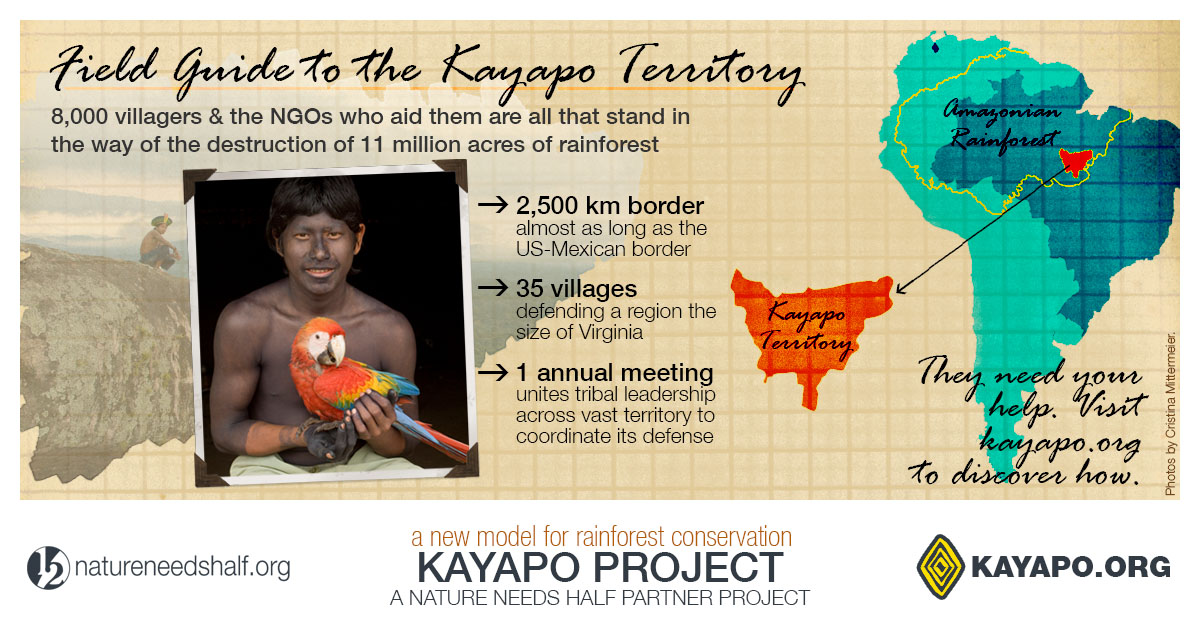Gathering their harvest, they return to the village and prepare the nut for global trade.
The village that is their home is tranquil and healthy. The nearby forest is plentiful with food and even entertainment. The spectacle of monkeys scampering between branches to the attendant calls of parrots and macaws is a frequent and pleasant reminder of the rich web of life all around. Opportunities to live with dignity abound.
Contrast this to the places that have been unable to resist the encroachment of illegal industrial operations. In those devastated places, Kayapo are outnumbered four to one, and village life is replaced by a seedy service industry. Prostitution, alcoholism, and drug use skyrocket. Families become dislocated from tradition and each other, material acquisition replaces true physical and emotional well-being.
Few projects better exemplify the Nature Needs Half principles in action. For the Kayapo Project protects a large and essential landscape by working with people, both Indigenous and Western, to improve and maintain a healthy and respectful relationship with nature.
In the next installment, we will cover the new threats emerging for the Kayapo and their partner NGOs, and the steps you can take to help.

Very interesting explanation of the importance of the harvesting of Brazil nuts by the Kapayo tribe. Brazil nuts equal wonder food and are a rich and natural source of selenium among other great nutritious benefits!